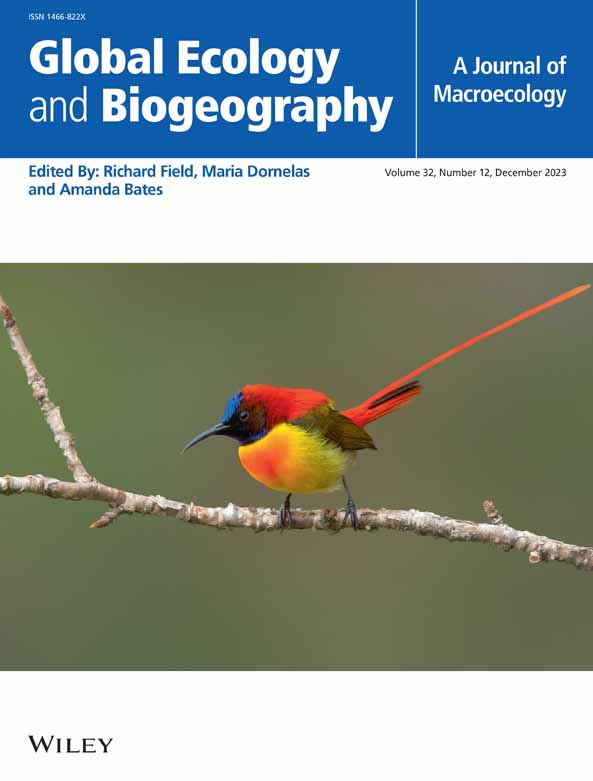Global-Scale Analysis Reveals Importance of Environment and Species Traits in Spatial Patterns of Riparian Plants' Genetic Diversity
Abstract
Aim
In riparian zones along rivers, plant demography is shaped by hydrologic disturbances, the dendritic structure of the river networks, and asymmetric gene flow due to the prevalence of unidirectional dispersal by hydrochory. Downstream-biased dispersal may lead to the accumulation of genetic diversity in populations situated lower within the catchment area—a phenomenon referred to as ‘downstream increase in intraspecific genetic diversity’ (DIGD). Our study aimed to test if the presence of this pattern in riparian plants depends on the species traits, sampling design and ecosystem integrity.
Location
Riparian zones along rivers worldwide.
Time Period
1978–2023.
Major Taxa Studied
Vascular plants.
Methods
We conducted meta-analysis of population genetic studies on riparian plants to identify the factors linked to the occurrence of the DIGD pattern. We modelled the correlation between position along rivers and population genetic diversity using a dataset consisting of variables extracted from the studies, supplemented by data from plant trait databases.
Results
We found no evidence for a general trend in plant genetic diversity along rivers, but species traits and environmental factors partially explained the patterns. A downstream increase in genetic diversity was more likely to be found in species capable of hydrochoric dispersal and along the unmodified rivers which maintain habitat continuity.
Main Conclusions
Our study highlights that different patterns of genetic diversity can be linked to species traits or different levels of habitat fragmentation. Population genetic studies of riparian plants have frequently investigated patterns of genetic diversity in remnant populations in degraded riparian habitats. Although such investigations are important, more population studies of common plants in well-preserved riparian zones are needed, as these can help understanding the general mechanisms that control natural population dynamics of plant species.


 求助内容:
求助内容: 应助结果提醒方式:
应助结果提醒方式:


